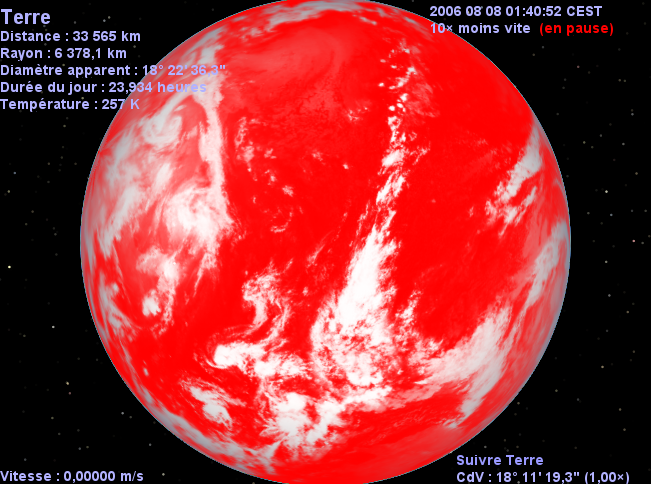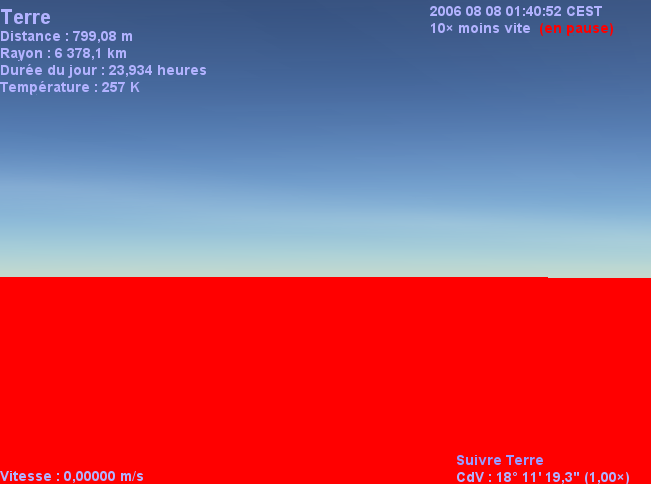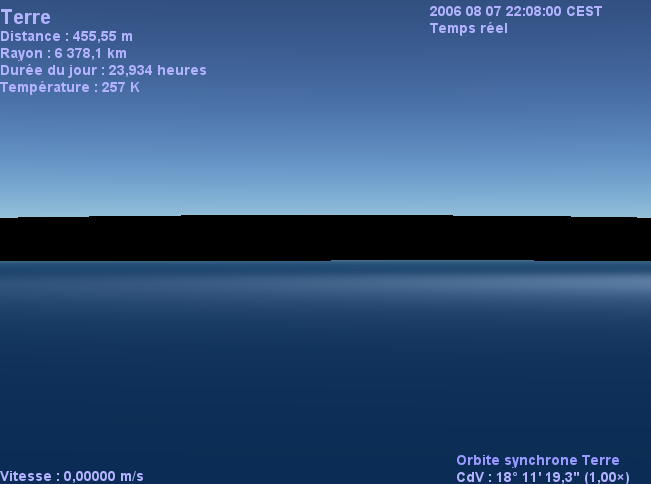Earth seascape - old:

Earth seascape - new - notice the ocean fade into the haze toward the horizon:

Sunrise - old:

Sunrise - new:

Whole Earth - old:

Whole Earth - new - note the bluish tint due to Rayleigh scattering:

--Chris








rra wrote:Great work, can't wait to play with it .
One thing I personally didn't like was the new "whole earth" view,
because of Rayleigh scattering the Earth doesn't look so crisp as it used te be.
Malenfant wrote:Looks good, Chris! How does a comparison of other planets look though (ie old mars vs new mars, old venus vs new venus)






Code: Select all
Vendor : NVIDIA Corporation
Renderer : GeForce 6600 GT/PCI/SSE2/3DNOW!
Version : 2.0.2 NVIDIA 87.62
Max simultaneous textures: 4
Max texture size: 4096Unfortunately, I think it shows the directional dependence of particulate colours. When you look towards the sun, you're seeing the shadowed side of all the dust particles, so they add little or no colour to the sky. All that's left is Mie and Rayleigh scattering, generating a bluish-white patch around the sun at Martian sunset. Next time you stand next to a (daytime) bonfire, scoot round and look at the sun through the smoke: you'll see brown smoke with a central washed-out blue patch surrounding the sun: the similarity to Martian sunset photos is quite impressive.chris wrote:I need to figure out what's actually going on in Mars's atmosphere. The dust colors the sky reddish and the sunsets have a slight blue color--it's as if the wavelength dependence of scattering is backward version of the Rayleigh 1/wavelength^4.
Christophe wrote:Chris, I tried the new code, with the atmosphere settings you posted. Here is what I get:
Turning off clouds or cloud shadows fixes it.
Also, when going below arround 750m, a gap between the horizon and the atmosphere appears:
And except at sunrise and sunset, the sky appears black.
chris wrote:Strange . . . Could you send or post the contents of shaders.log?
chris wrote:It does? One of those images looks like a midday scene with a blue sky.And except at sunrise and sunset, the sky appears black.